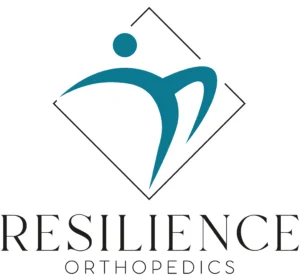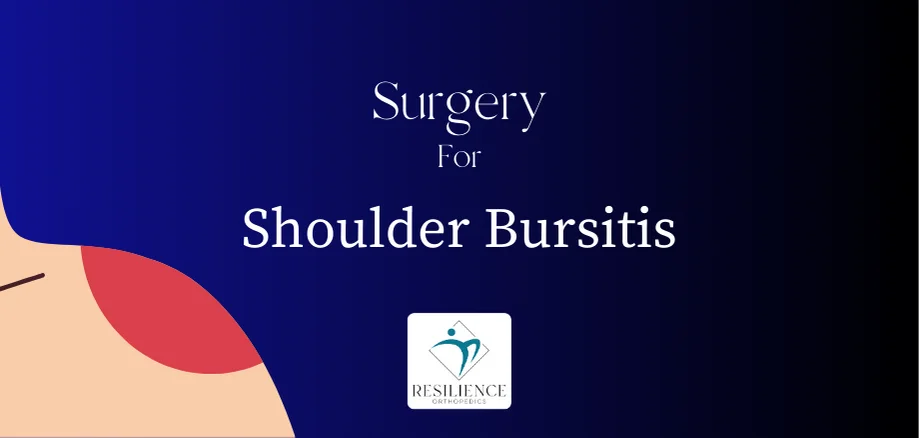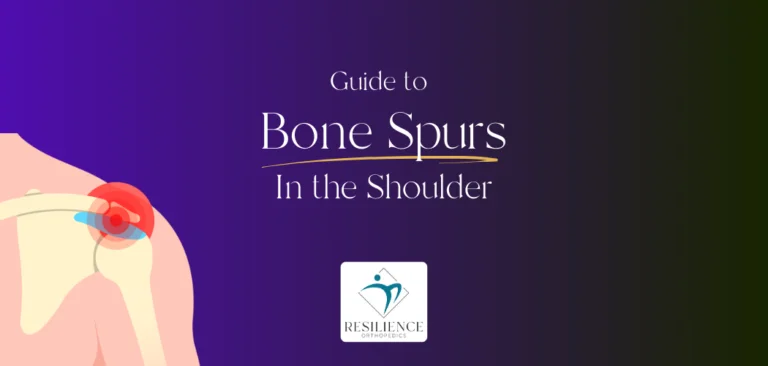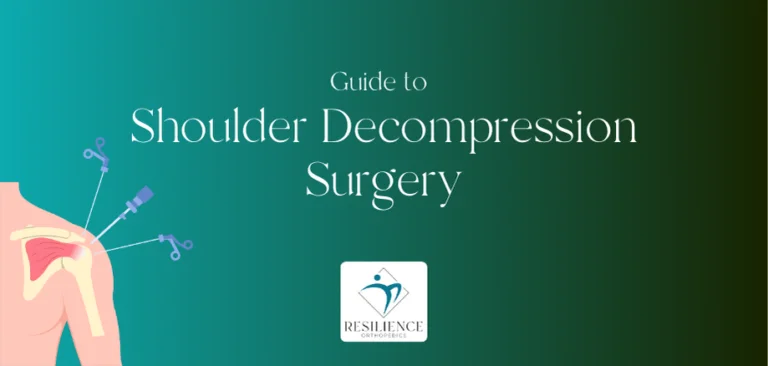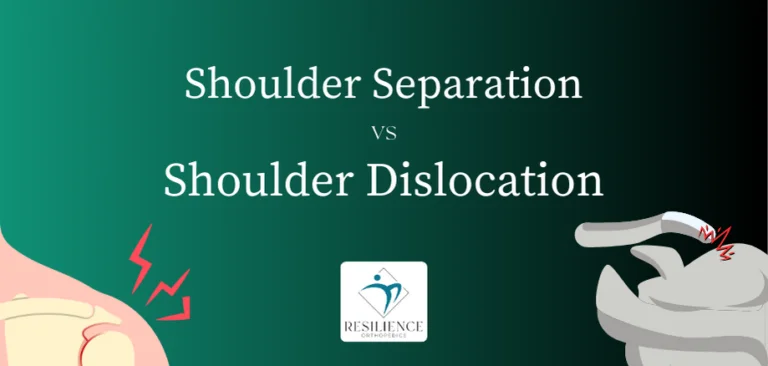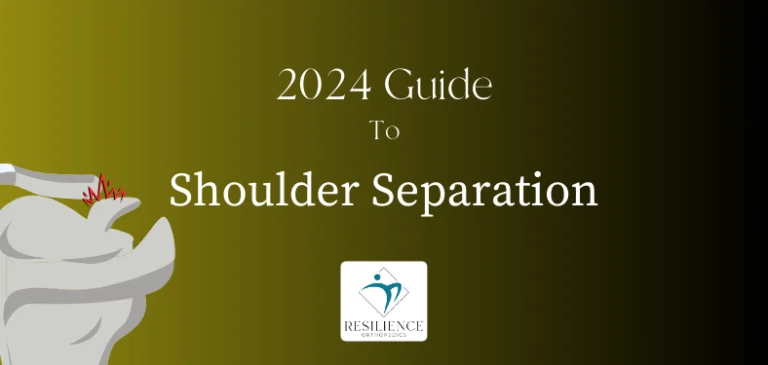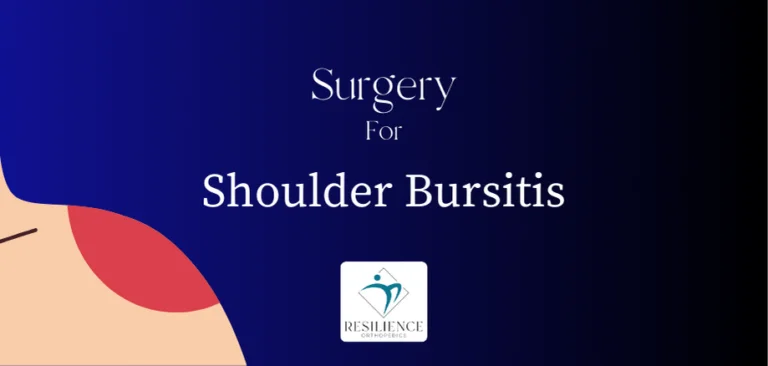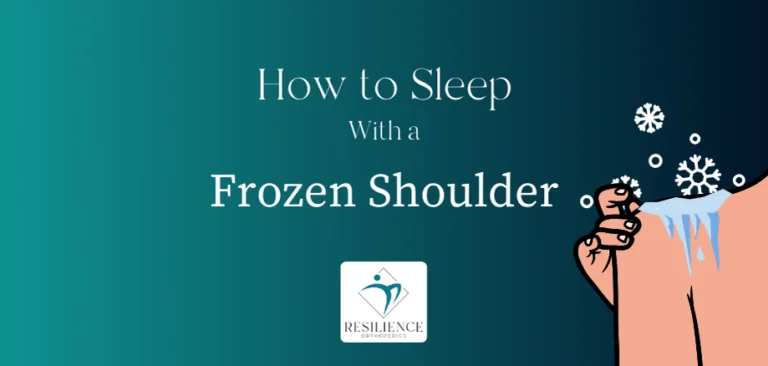Table of Contents
While shoulder bursitis can certainly be a pain, surgery is rarely the go-to solution. In most cases, consistent non-surgical care for 6-12 months can bring relief. However, if those efforts haven’t eased your discomfort, you may need shoulder surgery.
Shoulder bursitis surgery is often minimally invasive, thanks to a technique called arthroscopy. Think of it as keyhole surgery for your shoulder. ️
Instead of large incisions, your shoulder surgeon makes tiny cuts in the shoulder. They then use special instruments to precisely target and remove inflamed tissues. This causes less scarring, faster recovery, and helps get you back in action sooner.
Book a Consultation with Dr. Pamela Mehta, MD
The Best Orthopedic Surgeon in San Jose
Dr. Mehta is a board-certified orthopedic surgeon who can help you recover from your joint condition. If you:
- Are Suffering From Pain and Mobility Issues
- Need Orthopedic Assessment and Advice
- Want Treatment From a Top Orthopedic Doctor
We Can Help
Types of Shoulder Bursitis Surgery
Incision and Drainage
The most common surgical treatment, if needed, is an incision and drainage (called an I&D) and is used only in cases of infected bursa. The surgeon first numbs the skin with an anesthetic and then opens the bursa with a scalpel. Finally, they drain the fluid be it blood or pus present in the inflamed bursa.
Other surgical procedures include:
Bursectomy
The inflamed bursa is removed through a procedure called a bursectomy. This can be done with a single incision or arthroscopically, which requires a few small incisions.
After a bursa is removed, a new bursa may form in its place. The idea behind it is that the new bursa is less prone to irritation and causing painful symptoms. Bursectomy has several benefits, as removing the inflamed bursa may reduce shoulder pain and inflammation. This can reduce the need for:
- Long-term anti-inflammatory drugs
- Physical therapy
- Time away from work or school
The bursectomy also reduces the need for more surgery by removing only the affected area.
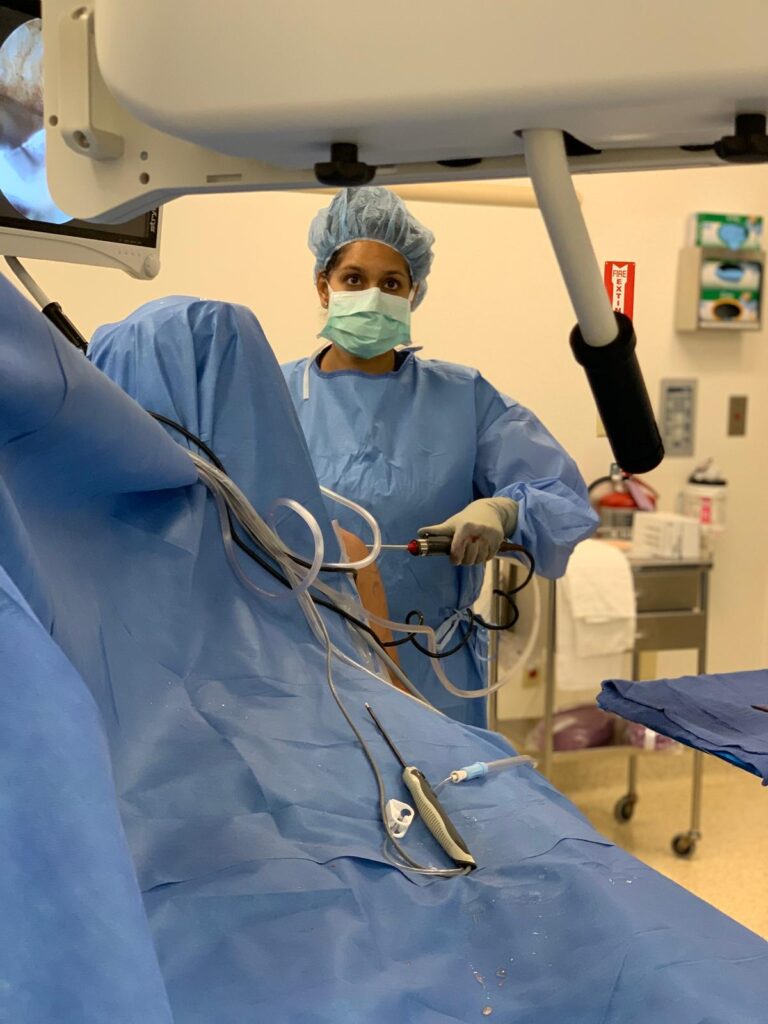
Sub-acromial Decompression (Acromioplasty)
During sub-acromial decompression, the surgeon removes or shaves down part of the shoulder joint. This gives the rotator cuff, tendons and subacromial bursa more room. By creating more space there is less chance of infection and inflammation. The long-term function of the shoulder joint is usually unaffected.
This surgery is recommended based on symptoms and how your bursitis looks on an MRI scan.
Tendon and Muscle Repair
Your orthopedist may advise surgery to repair the damage if rotator cuff muscle or tendon injury is the root cause. For example, a torn tendon may be repaired and reattached to the humeral head.
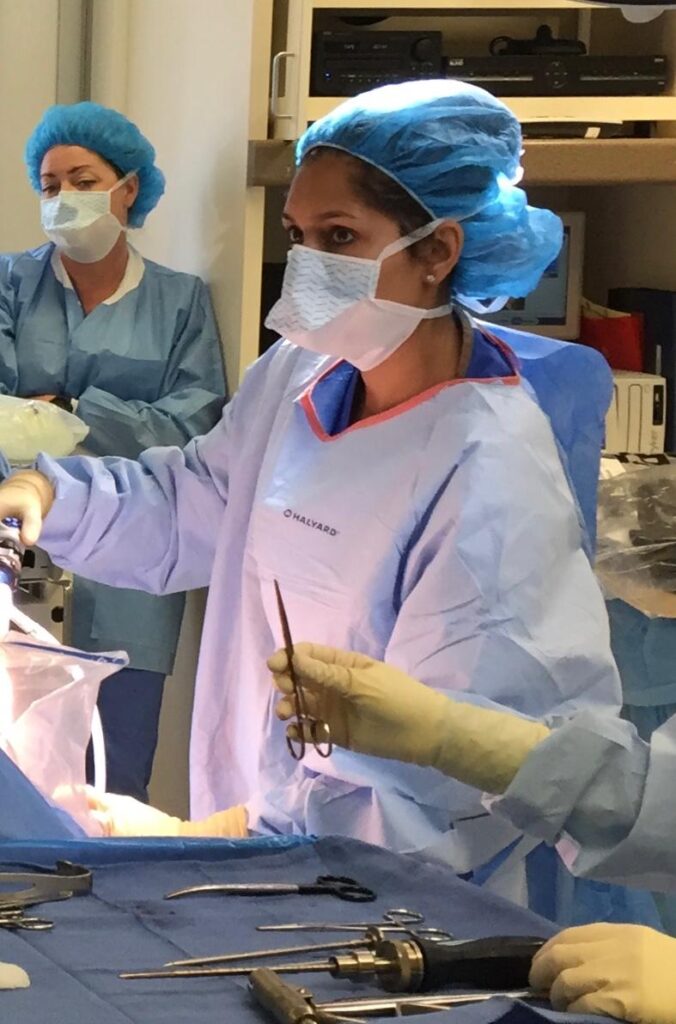
Surgical Risks and Complications
Surgery is never risk-free and must only be performed when the benefit outweighs the risks. Complications may include:
- Complications from anesthesia
- Infection (rare with arthroscopic procedures)
- Nerve injury (extremely rare)
- Blood vessel injury (extremely rare)
- Bleeding (extremely rare)
- Shoulder stiffness
- Failure of repair,
- Failure to improve your symptoms as much as you had hoped
- Complex regional pain syndrome
Additionally, after any shoulder bursitis surgery, DVT and Pulmonary Embolism (PE) are risks. This is when a blood clot forms in your arms and legs (DVT) and travels to your lungs (PE).
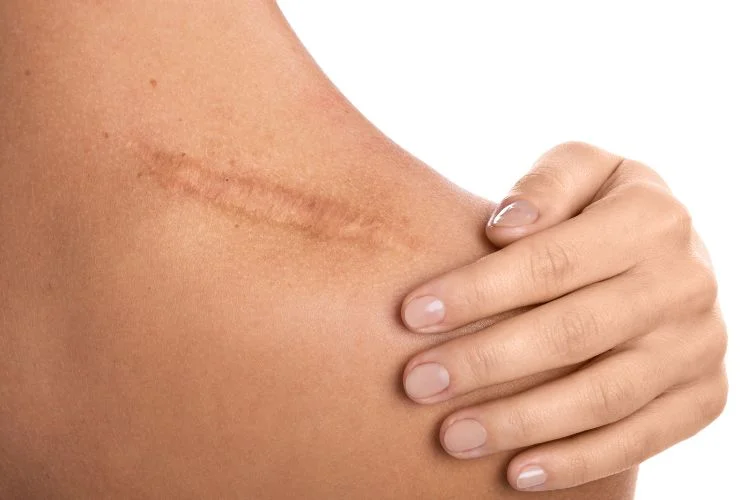
After surgery, your shoulder will be placed in a sling as directed by your doctor. The sling is used to limit the motion of your shoulder so that the rotator cuff tendon can incorporate and heal.
In some cases where the repair must be carefully protected, your arm may be placed in a sling with a pillow that is attached around your waist. It is very important to wear your sling as directed by your doctor after surgery. Return to full activity ranges from six to eight weeks.
Advice After Shoulder Bursitis Surgery
Pain Management
When you are discharged from the hospital, you will be given a prescription for pain medicine.
You need to take painkillers daily at the prescribed time.
Shoulder Sling
The sling is typically used for 2 to 6 weeks after shoulder bursitis surgery.
You should not do any reaching, lifting, pushing, or pulling with your shoulder during the first six weeks after surgery, unless specifically advised to by your doctor.
You should not reach behind your back with the operative arm. You may remove your arm from the sling to perform the recommended exercises, bend and straighten your elbow, and move your fingers several times a day.
You may remove the sling to bathe, dress, and perform elbow range of motion several times a day.
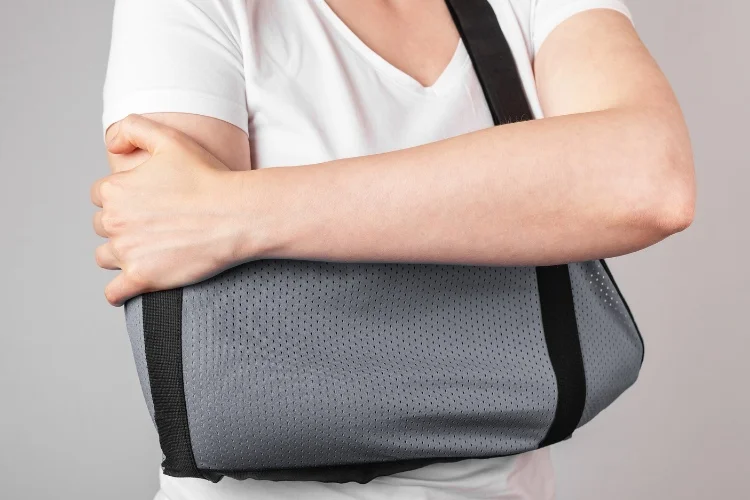
Diet
We recommend that you eat a light diet the evening of surgery and the next day.
You may resume eating a regular diet as soon as you tolerate it.
Ice Therapy
You may use ice bags or a bag of frozen vegetables to ice your shoulder.
You can also consider buying a cold pack machine. This machine has a sleeve that is attached to an ice cooler. This circulates cold water through the shoulder sleeve providing relief of pain and swelling after surgery.
- Ice your shoulder two to five times per day for at least 10 minutes until the swelling has calmed down, especially before sleep.
- We do recommend that you put a t-shirt or a thin towel between you and the sleeve so that it doesn’t put pressure or injure your skin.
Sleeping
We recommend that you try sleeping in a reclined position in bed. You may place a pillow between your body and your arm, and behind your elbow, to move your arm away from your body slightly. You should wear your sling when you sleep.
If you needed rotator cuff surgery, it is frequently exceedingly difficult to fall asleep. Your sleep-wake cycle could be disrupted by the surgery itself. Additionally, when lying flat on their backs, many patients have increased shoulder pain.
Don’t try to sleep on the shoulder we operated on for at least 6 weeks.
For more information, including how to sleep with a shoulder sling, check out our article on how to sleep with shoulder pain.
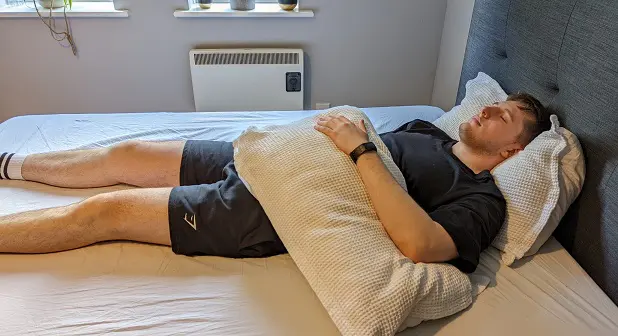
Driving
You may find it challenging to drive a car because you can’t use your operating arm. Also, if you are taking strong painkillers your ability to concentrate on driving may be affected.
Whether you decide to drive depends on how easily you can operate a vehicle with one hand, and what the local laws are in your area. Driving a car while under the influence of narcotic medicine is not advised.
Physical Therapy
Physical therapy prescriptions and the timing of these interventions are determined case-by-case.
On your initial postoperative appointment, this will be discussed with you. Your surgeon or the nurse in the recovery area may give you instructions to start doing mild range-of-motion exercises the day before surgery.
Ready to Recover?
Take the first step in getting back to your normal self, and book an appointment with Dr. Mehta today.
We’re ready when you are!
Caring for Your Surgical Incision
You may remove your dressing and shower 48 hours after shoulder bursitis surgery if you do not have a pain catheter. If you had a biceps tenodesis surgery, you should leave your dressing on for few days after surgery.
If you have a pain catheter, this should be removed by a family member 72 hours after surgery along with the shoulder dressing before showering.
You should not get in a bath and immerse the incisions underwater for six weeks, but you may get in the shower and let the water run over them. Pat the incisions dry afterward and cover them with dressings. There is no need to place any ointments over the incisions.
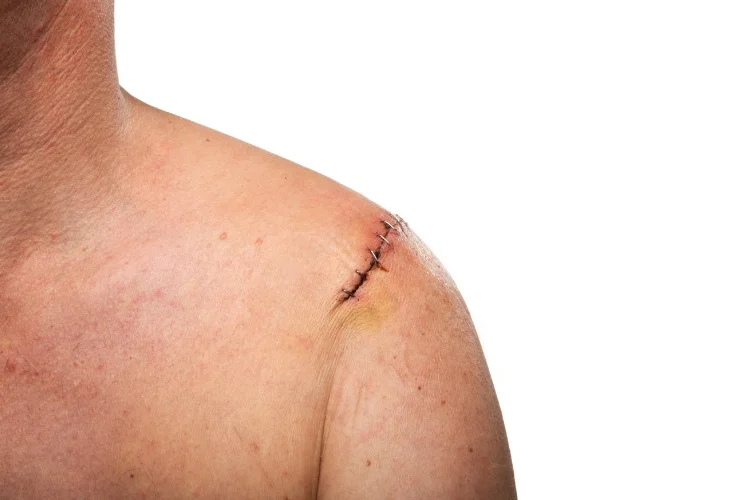
If you notice any discharge, swelling, or increased pain five days after surgery please call your doctor.
Redness around the incision is very common and should not be a concern. However please consult your doctor if you have:
- Redness or a discharging wound present five days after surgery
- Redness spreading away from the surgical incision site.
- Redness and fever greater than 100F
